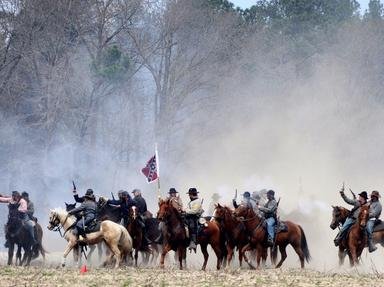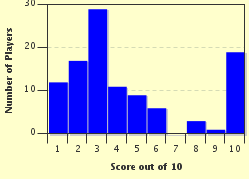Quiz Answer Key and Fun Facts
1. The first battle of the siege of Petersburg took place on June 9, 1864. The city was protected by Confederates under General P.G.T Beauregard, but who commanded the southern forces at the Dimmock Line sector, when the battle began?
2. At the second Battle of Petersburg, who took command of the Union Second Corps when its original commander, Winfield Scott Hancock, began suffering from his old Gettysburg wound?
3. After the Second Battle of Petersburg, Grant devised a plan to occupy the Weldon Railroad and cut Lee's supply lines. The task was assigned to the Second and Sixth Corps of the Union army. A Confederate division commander from the 3rd Corps, CSA observed a gap between the US forces and suggested to strike there. Who was he?
4. After the Battle of Jerusalem Plank Road, Grant sent part of his cavalry, commanded by Brigadier Generals Wilson and Kautz into a raid, known as the Wilson-Kautz Raid. During the raid, three battles occurred. Which was NOT amongst them?
5. After the Wilson-Kautz Raid, Grant sent a force under generals Hancock and Sheridan on an expedition to Deep Bottom. Which of the following names is NOT an alternative for the battle from July 27 to July 28, 1864?
6. Who said that the Battle of the Crater "was the saddest affair I have witnessed in this war"?
7. Which of the following Confederate officers was NOT killed or wounded during the Second Battle of Deep Bottom?
8. As Hancock's Deep Bottom operation was fought, Grant detached a part of his army somewhat over 20000 men, to occupy the Weldon Railroad. Who led the segment?
9. After the battle of Globe Tavern, Grant detached Hancock from his Deep Bottom expedition, in order to complete the control of the Weldon Railroad and Lee's communications. However, Hancock suffered a severe tactical setback in which battle?
10. Inside the trenches, the Confederate troops had started starving, because their rations had shrunk. Lee ordered Hampton to seize the 3,000 cattle beside the Union lines in a raid. What is this raid called?
Source: Author
DeepHistory
This quiz was reviewed by FunTrivia editor
bloomsby before going online.
Any errors found in FunTrivia content are routinely corrected through our feedback system.

